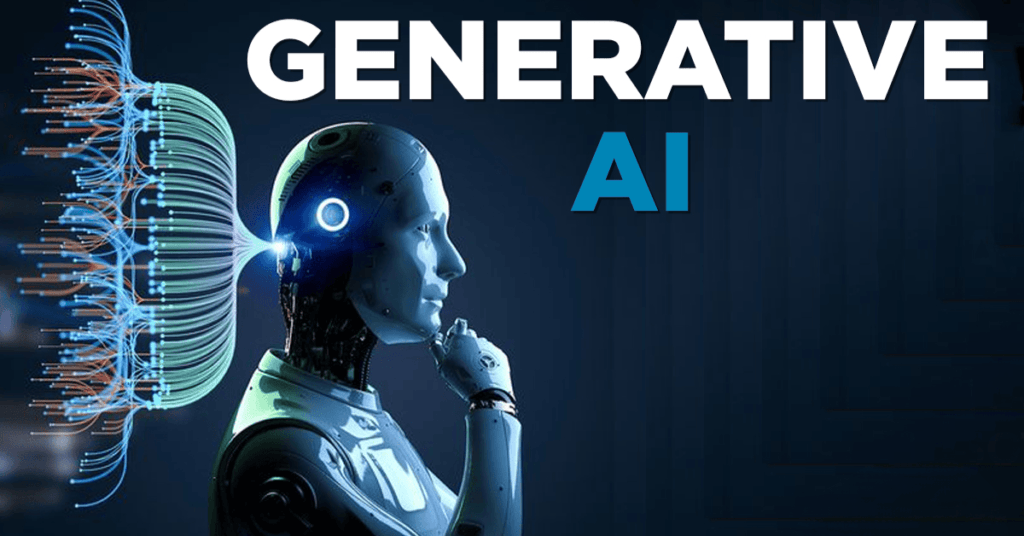Over the past decade, artificial intelligence (AI) has moved from being a futuristic idea to a technology we use in our everyday lives. Among the many advances in AI, generative AI has stood out for its ability to create entirely new content, designs and solutions. This innovation is not just improving how industries operate but is fundamentally changing them.
How Generative AI Is Changing Industries
Generative AI uses advanced algorithms, like generative adversarial networks (GANs) and transformer models, to create new content by learning patterns from existing data. This ability to generate text, images, music and even designs has opened up a world of possibilities for businesses and individuals alike.
What Is Generative AI?

Generative AI works by analyzing large amounts of data, recognizing patterns and producing new outputs that are similar to the data it learned from. For example, it can generate realistic images, write articles, compose music or design products. Unlike traditional AI that focuses on classification or prediction, generative AI creates something entirely new, making it highly versatile and creative.
Examples of Generative AI in Action
- Healthcare : Generative AI is helping researchers design new medicines, model complex proteins and create personalized treatment plans. For instance, it can simulate potential drug structures, speeding up the discovery process.
- Entertainment : Tools like DALL-E and MidJourney are transforming digital art creation. Similarly, ChatGPT is used to write stories, scripts and marketing content.
- Finance : Generative AI improves fraud detection, financial forecasting and trading strategies. It also automates complex financial reports.
- Retail : AI-powered recommendation engines create personalized shopping experiences by analyzing customer preferences and suggesting products they are likely to buy.
- Education : Generative AI is used to create custom learning materials, quizzes and even virtual tutors to make learning more engaging and accessible.
How AI Is Changing Agriculture
In agriculture, generative AI is helping farmers increase productivity and manage resources more efficiently. Some examples include :
- Crop Simulation : AI models predict crop yields and help farmers manage resources better.
- Pest Control : Generative AI analyzes pest behavior and develops strategies to control infestations.
- Smart Irrigation : AI tools create plans to optimize water usage, reducing waste and improving efficiency.
In India, where agriculture plays a crucial role in the economy, generative AI is empowering small farmers with data-driven tools to improve their yield and sustainability.
Impact of AI on Different Industries
Generative AI is revolutionizing industries by automating tasks, enhancing creativity and solving complex problems. Here are some key benefits:
- Increased Efficiency : Tasks that used to take hours can now be completed in minutes.
- Lower Costs : Automation reduces operational expenses while maintaining high quality.
- Faster Innovation : Generative AI enables rapid prototyping and experimentation, speeding up innovation cycles.
Generative AI in the Manufacturing Industry
Generative AI is driving significant changes in manufacturing by improving efficiency, quality and customization.
- Optimized Design : AI algorithms generate product designs that use less material while maintaining strength and durability.
- Predictive Maintenance : AI analyzes equipment data to predict when maintenance is needed, preventing costly breakdowns.
- Supply Chain Management : Generative AI models simulate supply chain scenarios, improving delivery times and reducing costs.
In India, industries like automotive, textiles and electronics are adopting generative AI to stay competitive in global markets.
Future of Generative AI in India
India is emerging as a major player in generative AI adoption. Startups and large companies are investing in AI-driven solutions to solve local challenges, such as language diversity, infrastructure gaps and resource limitations. With government support for AI research and development, India is on track to become a global leader in generative AI innovation.
Generative AI is more than just a tool—it’s a transformative force reshaping industries across the world. From agriculture to manufacturing, its applications are vast and varied, promising a future of greater efficiency, creativity and innovation. As countries like India continue to adopt and develop generative AI technologies, the possibilities for economic growth and societal progress are limitless.
Frequently Asked Questions(FAQs)
What is generative AI, and how does it work?
Generative AI is a type of artificial intelligence that creates new content, such as text, images, music or designs, by learning patterns from existing data. It uses advanced algorithms like generative adversarial networks (GANs) and transformer models to analyze data and produce outputs that are unique but similar to the original dataset.
How is generative AI being used in agriculture?
In agriculture, generative AI helps improve productivity and resource management. Examples include crop simulation to predict yields, pest control strategies based on pest behavior analysis, and smart irrigation systems that optimize water usage. In India, these technologies are empowering farmers to make better decisions and increase sustainability.
What are some examples of generative AI in manufacturing?
Generative AI is transforming manufacturing by optimizing product designs, enabling predictive maintenance, and streamlining supply chain management. For example, it helps create designs that use fewer materials while maintaining durability, predicts equipment maintenance needs to avoid breakdowns and simulates supply chain scenarios to improve efficiency.









